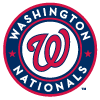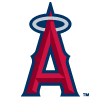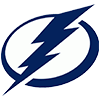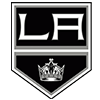Some fantasy football team stacks or pairings are valuable for obvious reasons – the coveted but elusive Patrick Mahomes-Travis Kelce-Tyreek Hill bundle doesn't need its value explained to anyone, for instance – but there are sometimes profit opportunities in the less obvious team stacks. This series will look at some offenses and break down the manner and extent to which they merit stack or pairing investments in Underdog Best Ball drafts.
To quickly clarify: stacking isn't in itself a guaranteed benefit for a team – the acquisition costs of the players involved have to be favorable in order for the structural advantage of a stack to pay off – so when drafting a team it's best to evaluate the player pool by overall value before considering team pairing angles in your draft strategy, especially in the early rounds.
The teams profiled are listed in no order. This article will look at Tennessee, Indianapolis and Baltimore. You can find the Underdog breakdown for Seattle, Buffalo and Miami here.
I'll rate these teams and teams in upcoming articles by an extremely unscientific grading system that features the following designations: Highly Favorable, Favorable, Doable and Unfavorable.
Tennessee
A.J. Brown (22.6 Underdog ADP)
Julio Jones (37.9 Underdog ADP)
Ryan Tannehill (107.3 Underdog ADP)
Anthony Firkser (167.0 Underdog ADP)
Josh Reynolds (211.3 Underdog ADP)
The Titans are one of the most run-heavy teams in the league, so it generally makes sense that the prices on A.J. Brown, Julio Jones and Ryan Tannehill somewhat lag relative to their weekly upside. In best ball, though, it's worth dwelling on that weekly upside more than you might in redraft. Tannehill's weekly volume floor is low -- he threw for under 250 yards 11 times last year -- but his weekly ceiling is about as high as anyone's (five games of 30-plus fantasy points) and the Titans have more incentive than ever to throw the ball after trading a second-round pick for Jones, a 32.5-year-old player. It's now or never for the Titans, and the more they find a way to unleash both Jones and Brown the better their chances of competing. It helps that the Tennessee defense fell apart last year without Dean Pees – if the Titans defense is bad again it helps increase the weekly chances of a shootout.
There's a case to make for pursuing the full stack between Brown, Jones and Tannehill, but in practice it's difficult to pull off. Their respective prices aren't an issue – I actually think Brown and Jones are strong standalone values at their current costs – but there isn't a draft slot that neatly lines up with their respective ADPs, so it either requires one of Brown or Jones to fall unusually far, or it requires reaching for one of the two earlier than their ADP. The first scenario is highly enviable, the second less so. If a stack is worth reaching for then we probably would need the offense to project for more passing volume than the Titans do. To get both Brown and Jones you'd probably need to take Brown by about the 17th pick (2.05), at which point you might be selecting him over players like DK Metcalf and Calvin Ridley, which I don't normally recommend. Even if you reach for Brown there, you'd need to pray that Jones falls to the 41st pick (4.05), and that's far from a lock.
It might be preferable to play that same scenario by taking Ridley in the second round and hoping for Jones in the fourth. Or, if you have a pick later than the Ridley-Metcalf range, say the 23rd, you could take Brown there while accepting you won't get a shot at Julio. Either way, the point is that it might generally be more reasonable to target just one of Brown or Jones while pairing them later with Tannehill, or even stacking the two of them with one of the two cheaper remaining Titans targets: Anthony Firkser or Josh Reynolds.
Reynolds isn't great, but he's reasonably competent and can be had in the 18th round. I like to draft him especially when I have Julio from earlier, because if Julio gets hurt in a game then Reynolds will plug in as his full-time replacement. Insurance policies generally aren't a great pursuit in best ball, but in the 18th round I'll gladly pay for Julio Insurance. Firkser will cost you a bit more than Reynolds but should suffice as a TE2, and in the event that Brown or Julio has an off week there's a good chance his production was rerouted to Firkser. Firkser has been a highly effective pass catcher throughout his career and could be the Titans' primary slot receiver this year, especially in the red zone.
Verdict: Favorable
Ideal stack: A.J. Brown + Julio Jones + Ryan Tannehill
Realistic stack: A.J. Brown or Julio Jones + Ryan Tannehill + Anthony Firkser or Josh Reynolds
Indianapolis
Michael Pittman (92.4 Underdog ADP)
T.Y. Hilton (132.3 Underdog ADP)
Parris Campbell (135.7 Underdog ADP)
Carson Wentz (163.9 Underdog ADP)
Mo Alie-Cox (204.5 Underdog ADP)
I'm much lower on Michael Pittman this year than most, so I should probably start with that disclaimer. I am not capable of representing the median opinion here – I flat out do not understand what everyone else is looking at. He was 23 by the end of the first month of his rookie season, meaning he was slightly older than average for a rookie and has fewer excuses than most for his poor production. Pittman was efficient with his targets (65.6 percent catch rate, 8.2 yards per target) but he was inefficient with his snaps, producing just 503 yards and one touchdown on 699 snaps. That was with Parris Campbell missing almost the entire season. Pittman was outproduced not just by T.Y. Hilton, but even Zach Pascal, who I'm (perhaps undeservedly) omitting from this stacking analysis. With all three receivers back, on what basis does a person assume Pittman inherits a leading role?
Pittman drew just 0.75 air yards per snap (18th percentile), which somehow lags his already low ADOT (8.6 yards, 26th percentile). Pittman was running the easiest routes and still struggled to get open. Even if he improves those marks, he has a tall task to close the gap with Hilton (1.67 air yards per snap at 12.3 ADOT). For Pittman to pay off at his price he needs to not just close that gap, but take a lead in air yardage per snap while also holding off Campbell's reintroduction to the offense.
Campbell is my favorite wide receiver target of the year and I expect him to lead this team in receptions if his injury misfortune ceases, so he's by far the most interesting target here to me. I'm also extremely high on the talent of tight end Mo Alie-Cox, though his role is uncertain to the point that he's only occasionally worth an 18th-round pick. It's in any case difficult for me to see a favorable stacking pattern here, even before we get to the question of Carson Wentz.
Wentz is an interesting bounce-back candidate after a disgraceful finish to his Philadelphia career, but to me he's not a great target on Underdog at his current price in the 14th round. I don't see what makes him obviously better this year than Derek Carr (187.4 Underdog ADP), Sam Darnold (191.1 Underdog ADP) or even Jared Goff (209.4 Underdog ADP). Wentz does have superior rushing upside to those three, to be fair, but if so that just lessens the share of the offense held by passing yardage and dilutes the stacking appeal of the Colts pass catchers.
Not only is Wentz a dubious target at ADP, but the horizontal orientation of the Colts passing game usage makes them more difficult yet as a stacking prospect. The upside is lacking in terms of the overall volume, and then you have to split it generously between Pittman, Hilton, Campbell, Pascal and even Nyheim Hines, who takes a much greater share than the typical RB2 would. Stacks are beneficial when they hoard a high percentage of a productive offense, not when they pursue a modest share of a sketchy passing game.
Verdict: Unfavorable
Ideal Stack: None – at most two of T.Y. Hilton, Parris Campbell and Mo Alie-Cox
Baltimore
Lamar Jackson (53.9 Underdog ADP)
Mark Andrews (60.1 Underdog ADP)
Marquise Brown (88.3 Underdog ADP)
Rashod Bateman (112.9 Underdog ADP)
Sammy Watkins (174.7 Underdog ADP)
A passing game stack generally loses some of its appeal the more the quarterback in question runs the ball, as that tends to draw usage away from the air, but in a case like Baltimore's it can still work thanks to the affordable prices of Marquise Brown, Rashod Bateman and Sammy Watkins. In addition to the manageable expenses already factoring in the run-heavy nature of Baltimore's offense, the rushing concern is eased by the fact that Lamar Jackson is a touchdown machine. We'd like more targets for our Baltimore receivers of course, but if we can trade target volume for uniquely high touchdown opportunity then it's certainly a tradeoff worth consideration. It also helps that Underdog's scoring is 0.5PPR rather than full point PPR – touchdowns necessarily matter more if receptions matter less.
None of that was meant to skip over Mark Andrews, who draws as much per-snap usage as any tight end in the league (1.5 air yards per snap, 97th percentile). He generally goes around the turn of the fifth and sixth rounds, though sometimes he falls into the mid-sixth. He's a strong target in that range especially, and in any case you can catch him affordably from a variety of draft slots.
If I'm low on any player in this group it's probably Bateman, but not because I'm actually low on him. Bateman is a highly convincing prospect and his price tag isn't unreasonable, I just think it's priced closer to his ceiling than the prices of Brown or even Watkins. But Watkins is of course a notorious injury concern, and if he's out of the picture then I'm fully sold on Bateman in that case. Jackson has 62 passing touchdowns on his last 777 attempts, and at that rate he would project for a baseline of about 35 touchdowns over 17 games. If the Ravens attempt just two more pass attempts per game then that baseline changes to something like 38 touchdowns. If Jackson is throwing touchdowns at that rate then these pass catchers are probably a bit underpriced.
Verdict: Favorable
Ideal stack: Lamar Jackson + one or two of Mark Andrews, Marquise Brown, Rashod Bateman or Sammy Watkins








































